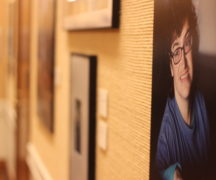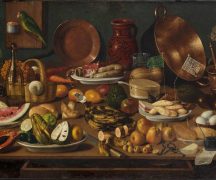By DAVID DUPONT
BG Independent News
The Toledo Museum of Art’s latest exhibit “Expanding Horizons: The Evolving Character of a Nation” questions its past to find answers about its future.
The exhibit that opened last weekend in the New Media gallery is itself evolving as the museum interrogates the changing views about the country, its history, and its art.
While this might seem a reaction to the civil eruptions following the death of George Floyd, the museum was already trying to broaden its appeal and connect with its Old West End neighborhood. That neighborhood reflects both a legacy of prosperity with its historic mansions as well as of injustice, with I-75 severing the neighborhoods just west of the museum.
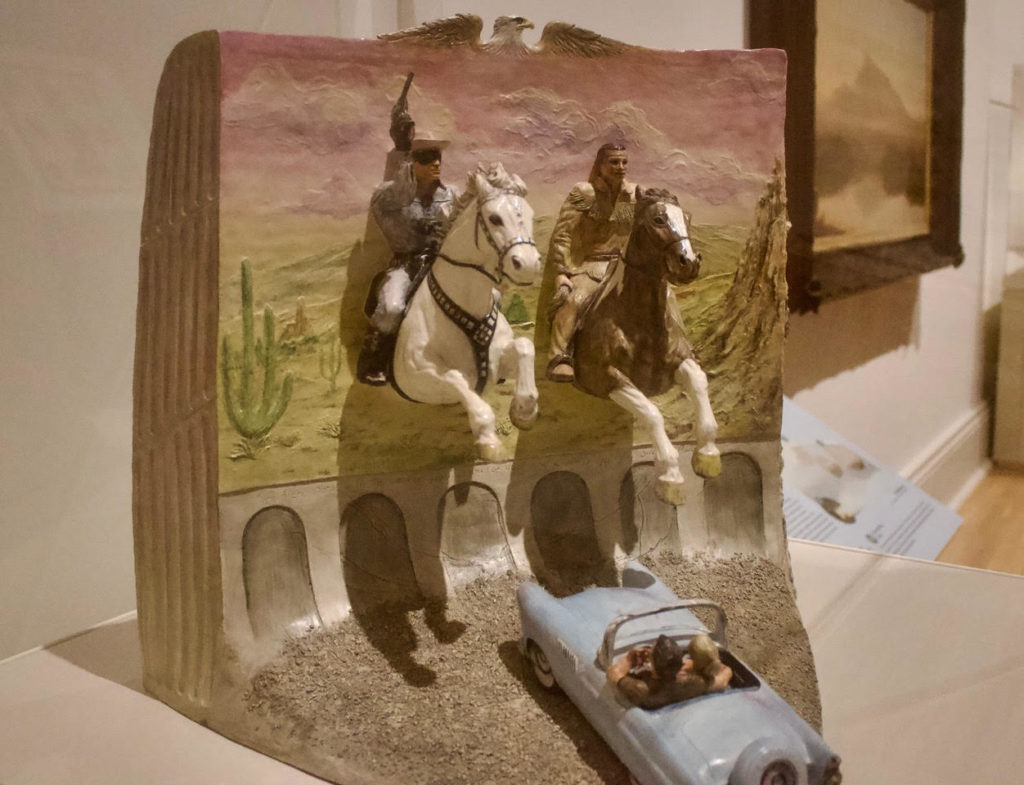
“Expanding Horizons” places some old, and new favorites, in new contexts, putting them in conversation with works once separated in distant galleries, or in storage.
Area sculptor Robert Garcia’s “National Waterfall Drive-In Theater” is next to Sanford Robinson Gifford’s 1860 luminous landscape “The Wilderness.”
Both Garcia’s sculpture and Gifford’s landscape depict the American myths of the wild – Gifford’s, based not on a western scene but on Mount Katahdin in Maine, is richly sentimental and largely devoid of the humans who inhabit it. He tames the wildness within a frame.
Garcia depicts the Lone Ranger and Tonto bursting from a screen depicting a Western landscape as a couple sits in their car below. Garcia laces his depiction of the mythic Wild West with humor, the stereotypes, including Tonto, larger than the landscape.
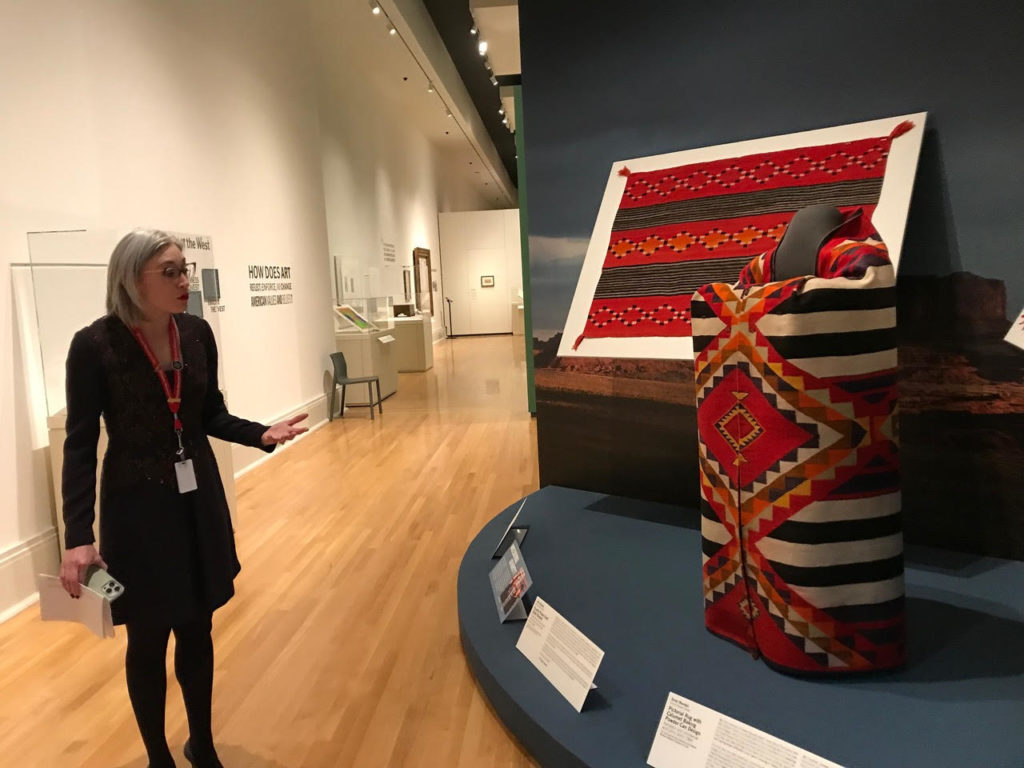
Facing these two works are textiles by contemporary indigenous weavers. These are the only works on loan for this exhibit, said curator of American art Erin Corrales-Diaz.
And, this part of the exhibit, was not curated by her, rather Linda Teller Pete and DY Begay, both Diné (Navajo) weavers decided what and how to display the wraps and rugs.
It is in this context that the viewer finds one of the museum’s signature pieces Frederic Remington’s “Indians Simulating Buffalo,” a fictional construction disguised as realism.
These juxtapositions are disrupting the standard practices about presenting art, which is central to the mission of “Expanding Horizons.”
Corrales-Diaz, who was appointed in late 2021 as the first curator on American art in 40 years, said the museum changed the presentation to be more thematic placing together art from different periods, different media, created by artists with different backgrounds.
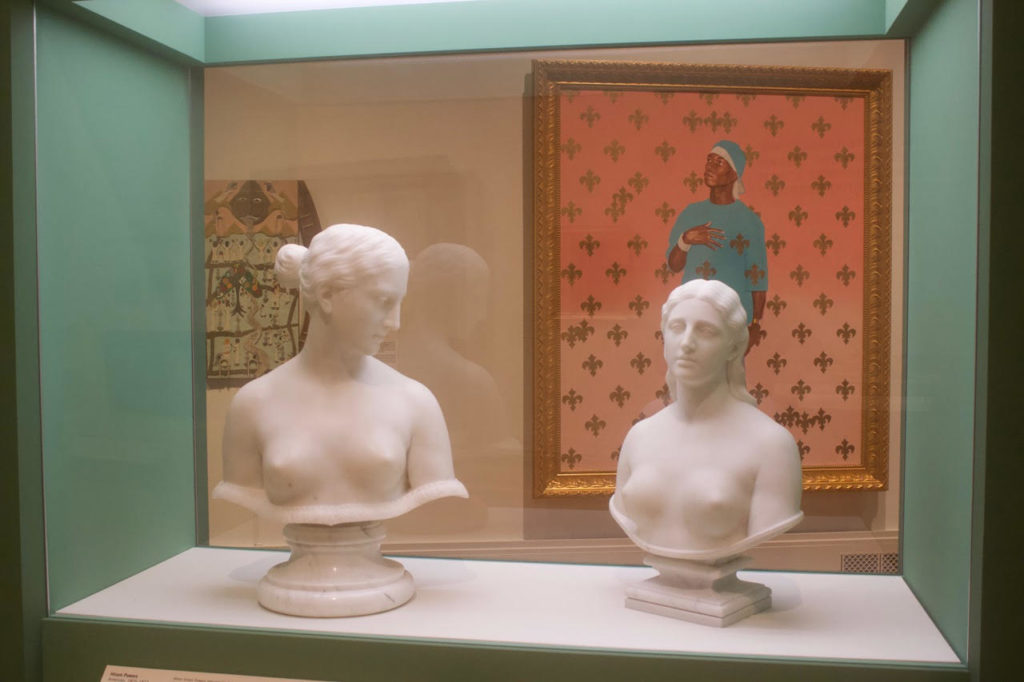
So, together on one wall devoted to views of religion the viewer finds a folk artist Leroy Almon’s 1984 multimedia construction “The New Heaven,” Yale-educated Kehinde Wiley’s 2003 painting “Saint Francis of Paola,” and Paris-trained Henry Ossawa Tanner’s 1910 painting “The Disciples on the Sea.”
Corrales-Diaz noted that Tanner’s painting was purchased by the museum in 1913, a few years after it was created, early recognition of African American master. Tanner considered religion as central to his work, though he was most known for a couple genre paintings representing contemporary African American life.
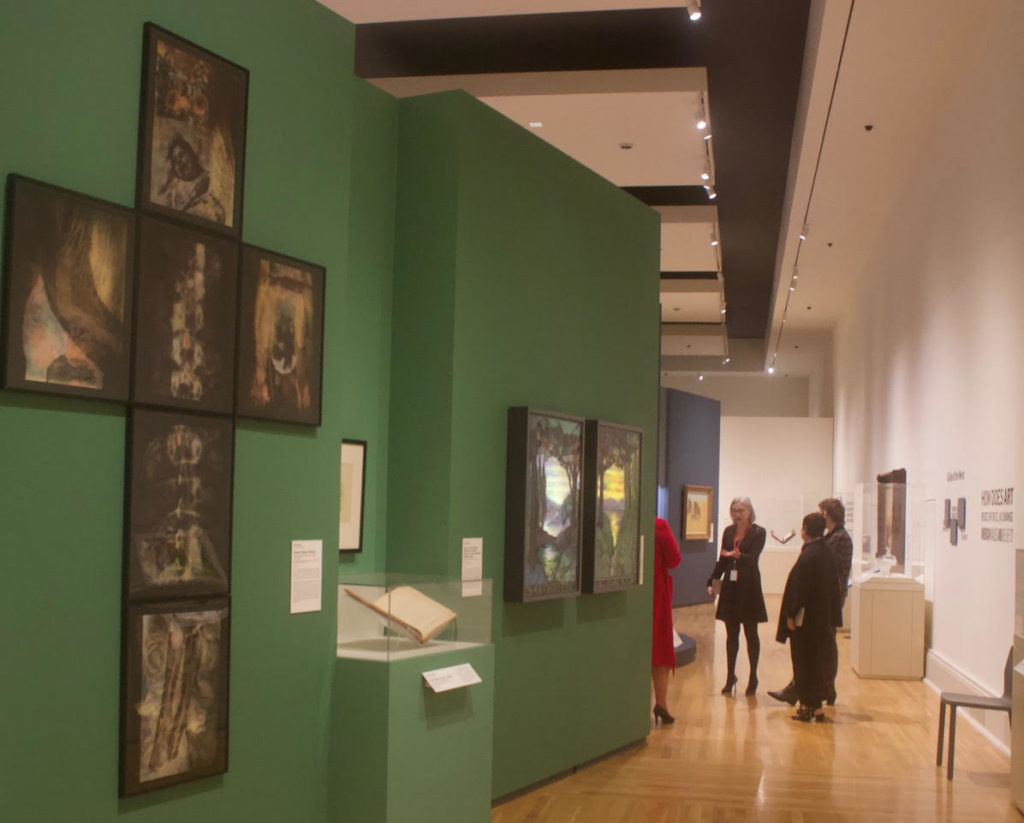
In all the exhibit has 80 objects. They include works viewers expect to see when they visit, such as “The Architect’s Dream” by Thomas Cole, some that haven’t been seen in a while such as Kathy Vargas’s “Broken Column: Mother,” which hasn’t been on view since 2006, new purchases such as the George Washington Centennial Table, and items pulled from the vaults.
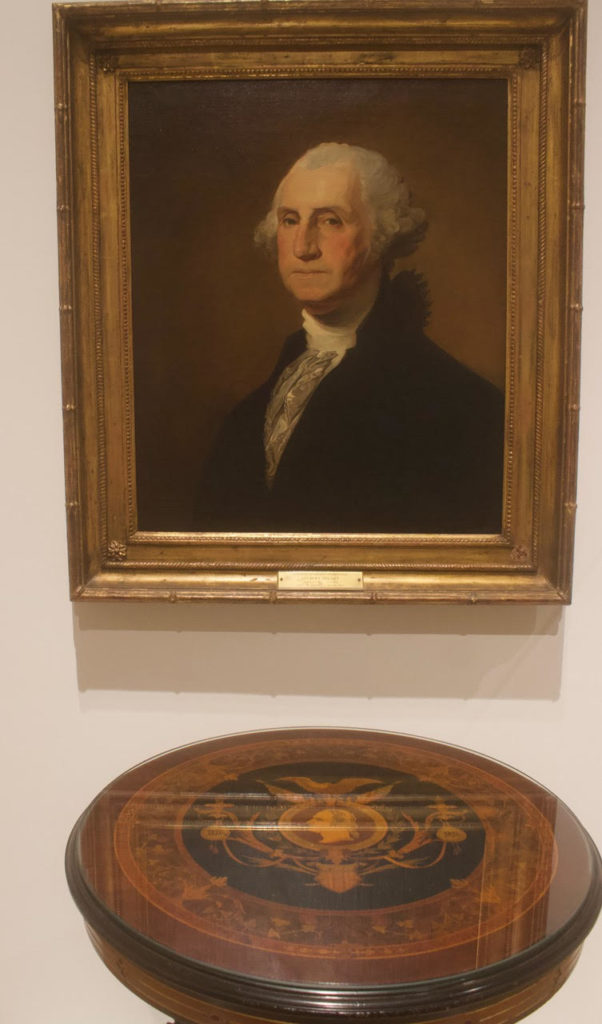
In her time at the museum, and in preparation for this exhibit, Corrales-Diaz has been digging through the museum’s collection. One of the discovered treasures is a copy of “Wusku Wuttestamentum Nul-Lordumun Jesus Christ (The New Testament translated into Massachusetts).” The Puritan missionary John Eliot and his indigenous collaborators would have had to come up with a written form of the unwritten language, said research associate Willow Gritzmaker.
The exhibit will be up for about two years. In that time Corrales-Diaz said , changes will be made, pages turned, items switched out. “This is a work in progress.”
Museum Director Adam Levine said the exhibit represents “a different approach to design and installation, a different approach to interpretation.”
All this leads up to 2027, he said, when “you will have a totally reinstalled museum.”



